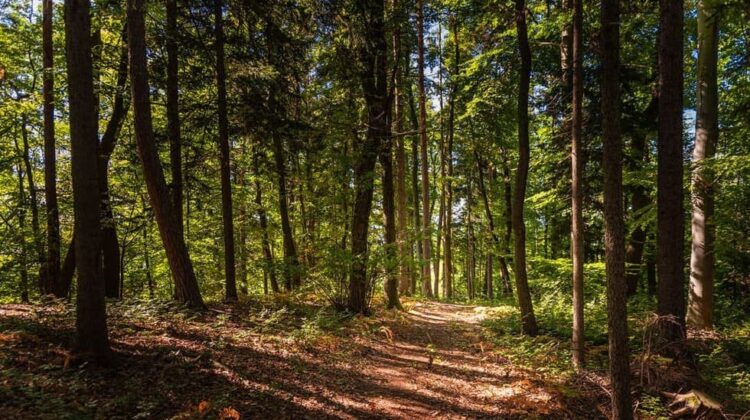
Preserving Forests And Managing Carbon With Satellites
Vegetation is a source of cleaning the atmosphere from harmful gasses. As a result of photosynthesis, oxygen is released, enriching the air, and carbon dioxide is absorbed. From an ecological point of view, the forest is an essential element of the biological processes taking place in nature. Forests are home to millions of living organisms and ensure biodiversity and the stability of ecosystems.
Since ancient times people have used wood to build buildings, make furniture, toys and musical instruments. Solid logs were used to build paths through swamps; with the advent of electricity, the logs were turned into power transmission poles. Firewood was used to heat dwellings in cold regions and to cook food.
Unfortunately, such wide use of wood in different industries has led to severe deforestation. And the industry that is most responsible for the alarming rates of forest loss is agriculture and food production in general. Luckily, modern technology development has solutions to offer for sustainable forestry. For example, forest preservation can start with advanced stands monitoring via software like EOSDA Forest Monitoring based on satellite imagery analytics.
On top of that, modern opportunities regarding soil organic carbon modeling using satellite data enhance our ability to understand and mitigate the impacts of deforestation. By providing accurate, real-time data on forest and soil conditions, satellite-based monitoring tools help in making informed decisions to promote sustainable land use and carbon management practices.
Forests and Carbon Management
Carbon stored in the ground is a critical component of the global carbon cycle as soil is basically a warehouse for atmospheric carbon dioxide, keeping it stored and not allowing it to contribute to more changes in climate patterns. Forests play a leading role in this process through the accumulation of organic matter in the soil, derived from leaf litter, root biomass, and decomposing plant material. The complex root systems of trees enhance soil structure, promoting the sequestration of carbon deeper into its profile, where it can remain stored for centuries. Additionally, forest ecosystems support diverse microbial communities that facilitate the decomposition and stabilization of organic matter, further contributing to soil carbon storage. Therefore, by maintaining healthy forest ecosystems and minimizing deforestation, we can preserve and enhance the soil’s capacity to store carbon, thereby supporting climate regulation and promoting overall ecosystem resilience to the quite threatening climate change. More so, there is a very clear connection between preserving trees and feeding the world population.
Food Production and Deforestation
Countries that engage in extensive agriculture need vast areas of land that allow large quantities of crops to be grown. In addition, the increased demand for certain agricultural products has led many large producers to cut down forests in order to clear more land. In some countries, logging and burning is taking place. This process consists of cutting down trees and burning them to fertilize the land with the resulting ash. Over time, the soil loses nutrients and farmers move to other land. One of the biggest threats to forestry is the palm tree plantations created for producing different oils. Such plantations require huge territories, resulting in vast areas of forest destroyed.
Like crop growing, livestock farming requires a huge expansion of the area on which animals can be raised. Thus, deforestation is considered the best alternative to provide the specified physical space. The area of desertification is increasing at a rapid rate. A significant percentage of the amount of deforestation and deforestation area is due to illegal activities.
One way to help forestry suppliers solve the problem of deforestation is to plant more green spaces. But this method is ineffective when it comes to huge areas of lost forests. First of all, a sensible approach to the use of vegetation and other natural resources is needed.
Measures to combat illegal deforestation, to preserve the forest fund are carried out in the following directions:
- Planning and monitoring of forest use
- Strengthening of protection, control over deforestation
- Development of forest fund accounting system
- Revision of laws in the sphere of forest production and timber extraction.
Satellite Remote Sensing
Various forest monitoring methods are currently in use. The main purpose of monitoring carried out with the help of remote sensing methods is to assess the condition of forests. Assessment of reforestation is one of the urgent tasks of today. Satellite monitoring makes it possible to remotely assess forest state, detect changes, threats, and plan smart forest management. Identification of forest cuttings, burnt areas, and assessment of reforestation in remote areas is possible thanks to spectral imagery analysis with the help of vegetation indices.
The main tasks that remote sensing solves while contributing to the future of forestry are:
- Forestry mapping
- Identification and control of deforestation
- Studying of forest species
- Statistics and distribution of forests by age, stock, height, weight and biological productivity
- Studying and analysis of harmful negative factors that affect the forest
- Study of terrain and natural conditions in which representatives of forestry are located.
Remote sensing provides a lot of useful and important information to scientists who can use it to have a positive impact on the forest and to understand which areas have problems and which areas show the beginnings of progress and prosperity.
EOSDA Forest Monitoring
There are different digital forestry tools designed specifically for forestry and its needs. Some are for stands monitoring, some for timber management, some for logistics tracking, etc. A company called EOS Data Analytics has developed the EOSDA Forest Monitoring platform as its own sustainable forestry initiative. The tool uses satellite imagery analytics to enhance forest monitoring and management for forest owners, logging companies, researchers, and other industry players.
The solution also includes generating carbon stock reports using biomass estimates to fight global warming and earn carbon credits. These reports, which measure carbon in megagrams, are updated annually to facilitate accurate forest carbon stock estimation, timber assessment for purchase or insurance, and ecological research on land cover carbon stock. This solution relies on ground truth data for better accuracy when measuring soil carbon.
Such remote monitoring is essential in forest management since it enables gathering insights on what’s happening in the stands without having to visit the site physically, which might be very complicated if it’s a distant location or a huge territory that needs to be observed. The software allows for both tracking changes in forest health and receiving notifications about any threats online. Users can detect deforestation, water stress, forest productivity, weather, thermal anomalies, and more. With all this data in one place, forestry players are able to perform smart and sustainable management of their lands.
Author: Kateryna Sergieieva
Kateryna Sergieieva has a Ph.D. in information technologies and 15 years of experience in remote sensing. She is a scientist responsible for developing technologies for satellite monitoring and surface feature change detection. Kateryna is an author of over 60 scientific publications.

